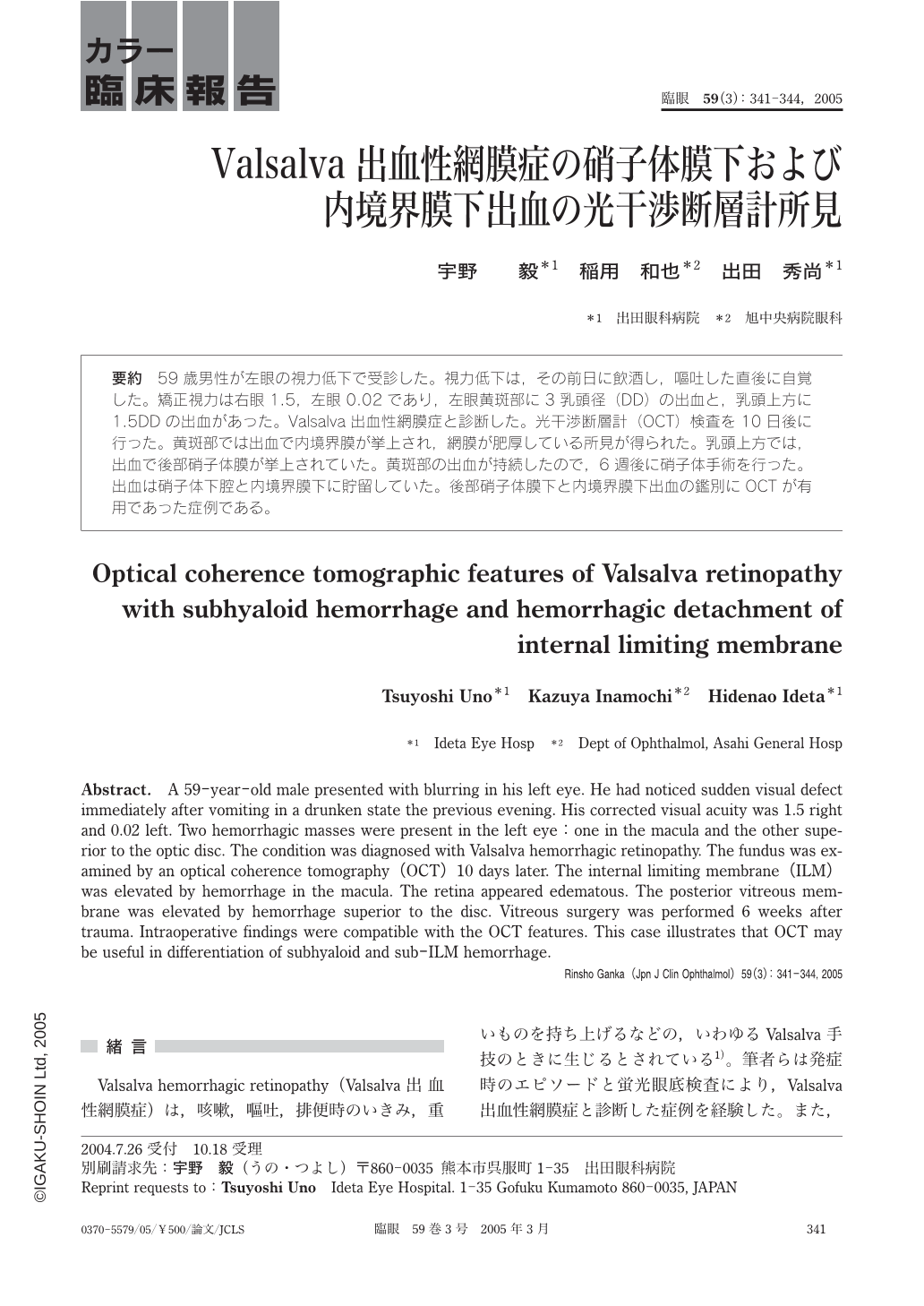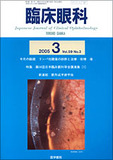Japanese
English
- 有料閲覧
- Abstract 文献概要
- 1ページ目 Look Inside
59歳男性が左眼の視力低下で受診した。視力低下は,その前日に飲酒し,嘔吐した直後に自覚した。矯正視力は右眼1.5,左眼0.02であり,左眼黄斑部に3乳頭径(DD)の出血と,乳頭上方に1.5DDの出血があった。Valsalva出血性網膜症と診断した。光干渉断層計(OCT)検査を10日後に行った。黄斑部では出血で内境界膜が挙上され,網膜が肥厚している所見が得られた。乳頭上方では,出血で後部硝子体膜が挙上されていた。黄斑部の出血が持続したので,6週後に硝子体手術を行った。出血は硝子体下腔と内境界膜下に貯留していた。後部硝子体膜下と内境界膜下出血の鑑別にOCTが有用であった症例である。
A 59-year-old male presented with blurring in his left eye. He had noticed sudden visual defect immediately after vomiting in a drunken state the previous evening. His corrected visual acuity was 1.5 right and 0.02 left. Two hemorrhagic masses were present in the left eye:one in the macula and the other superior to the optic disc. The condition was diagnosed with Valsalva hemorrhagic retinopathy. The fundus was examined by an optical coherence tomography(OCT)10 days later. The internal limiting membrane(ILM)was elevated by hemorrhage in the macula. The retina appeared edematous. The posterior vitreous membrane was elevated by hemorrhage superior to the disc. Vitreous surgery was performed 6 weeks after trauma. Intraoperative findings were compatible with the OCT features. This case illustrates that OCT may be useful in differentiation of subhyaloid and sub-ILM hemorrhage.

Copyright © 2005, Igaku-Shoin Ltd. All rights reserved.


